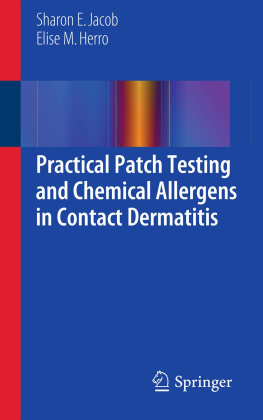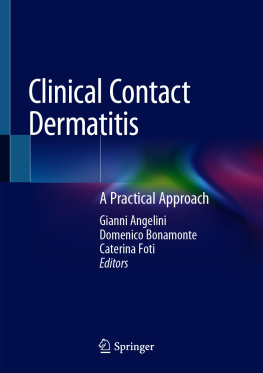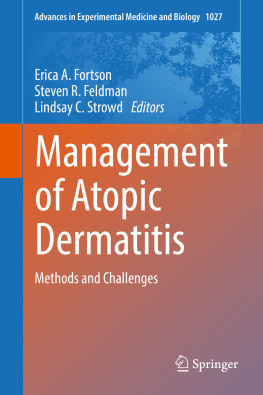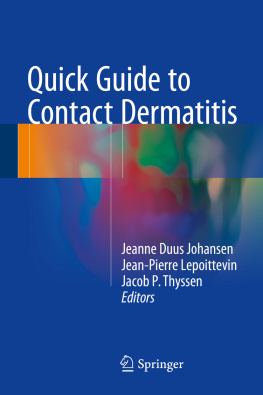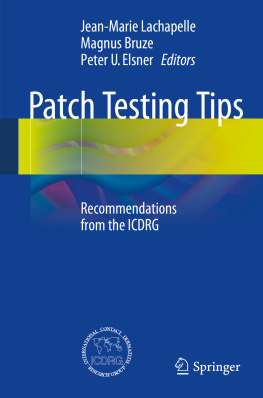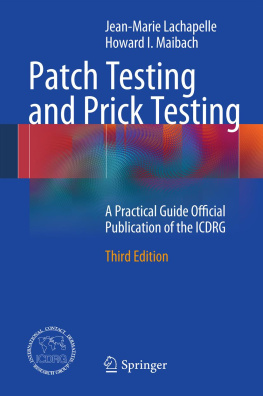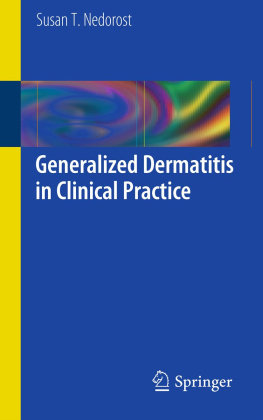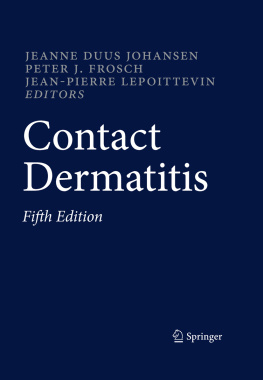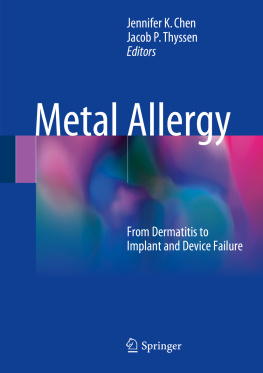Introduction
Contact dermatitis (CD) is one of the leading reasons for patients to seek dermatology consultation, with an estimated 72 million people in the United States afflicted with this condition. There are two main types of CD, all of which result from contact of the skin or mucous membranes with an exogenous agent. The most common form of CD, accounting for 80 % of cases, is irritant contact dermatitis (ICD), followed by allergic contact dermatitis (ACD), which represents 20 % of cases and is the primary focus of this handbook []. Finally, much less commonly observed are contact urticaria (CU) and protein contact dermatitis, which are beyond the scope of this handbook, but are mentioned briefly for completeness, and the reader is directed to key sources on these topics below.
Background on Diagnostic Patch Testing in the US
In the United States, Marion Baldur Sulzberger first introduced the epicutaneous patch test technique, developed by Josef Jadassohn, in the 1930s at New York Skin and Cancer Unit.
Furthermore, in 1931 Helene Ollendorff-Curth, also trained by Jadassohn, came to the United States and introduced patch testing to industries in order to improve safety measures on commercially available products. Over the next three decades, patch testing clinics were developed worldwide, and in 1962, the Scandinavian Committee for Standardization of Routine Patch Testing began to formalize patch testing procedure and materials. By the early 1980s, the Food and Drug Administration (FDA) proposed a ban on the production and sale of allergens for the patch tests based on the lack of availability of scientific evidence for its procedure, safety, and efficacy. A mandate was set for companies to standardize their medicinal chemicals.
In response, the North American Contact Dermatitis Group (NACDG) developed a research arm and worked with Stiefel Laboratories to help the German subsidiary of Hermal receive approval for the European based Hermal/Trolab 20 standard allergen test. This test was available through the American Academy of Dermatology (AAD). Then, under the leadership of Howard Maibach and the Pharmacia-Upjohn Company, the 20 Allergen Test was transformed into what is now the commercially available Thin-layer Rapid Use Epicutaneous (T.R.U.E.) TestTM(Mekos Laboratories A/S, Hillerod, Denmark), whose first 23 allergens were approved by the FDA in 1997 []. By 2012, 12 new allergens/mixes had received FDA approval for commercial availability for a total of 35 chemicals/mixes.
Approximately 1,700 new synthetic chemicals on average are being brought to the U.S. market annually and, notably, the Environmental Protection Agency (EPA) tests only chemicals that demonstrate evidence of significant health risk potential. Thus, the situation is such that only about 25 % (of the 82,000 chemicals in use in the U.S.) have ever been subject to basic testing, which is why A. Fischer is astute in his observation that the physician should suspect anything and everything under the sun.
Fortunately, major culprit allergens have been identified through extensive tracking by the International Contact Dermatitis Research Group (ICDRG) and the North American Contact Dermatitis Group (NACDG) over the last 30 years. This has allowed for the compilation and generation of series of panels of allergens, which can serve as a base point to initiate screening. For example, available series include: the American Contact Dermatitis Society (ACDS) 80 Core Series [.
Table 1.1
American contact dermatitis society (ACDS) 80 core series
Substance | Handbook # |
|---|
1. Nickel sulfate 2.5 % pet.a | |
2. Myroxylon pereirae 25 % pet.a | |
3. Fragrance mix I 8 % pet.a, c | |
4. Quaternium 15.2 % pet.a | |
5. Neomycin 20 % pet.a | |
6. Budesonide 0.1 % pet.a | |
7. Formaldehyde 1 % aq.a, c | |
8. Cobalt chloride 1 % pet.a, c | |
9. p-tert-Butylphenol formaldehyde resin 1 % pet.a | |
10. P-Phenylenediamine 1 % pet.a | |
11. Potassium dichromate 0.25 % pet.a, c | |
12. Carba mix 3 % pet.a, c | |
13. Thiuram mix 1 % pet.a | |
14. Diazolidinyl urea 1 % pet.a | |
15. Paraben mix 12 % pet.a | |
16. Black rubber mix 0.6 % pet.a | |
17. Imidazolidinyl urea 2 % pet.a | |
18. Mercapto mix 1 % pet.a | |
19. Methylchlorisothiazolinone/Methylisothiazolinone 100 ppm. aq.a | |
20. Tixocortol-21- pivalate 1 % pet.a | |
21. Mercaptobenzothiazole 1 % pet.a | |
22. Colophony 20 % pet.a | |
23. Epoxy resin 1 % pet.a | |
24. Ethylenediamine 1 % pet.a | |
25. Wool alcohol 30 % pet.a | |
26. Benzocaine 5 % pet.b |

